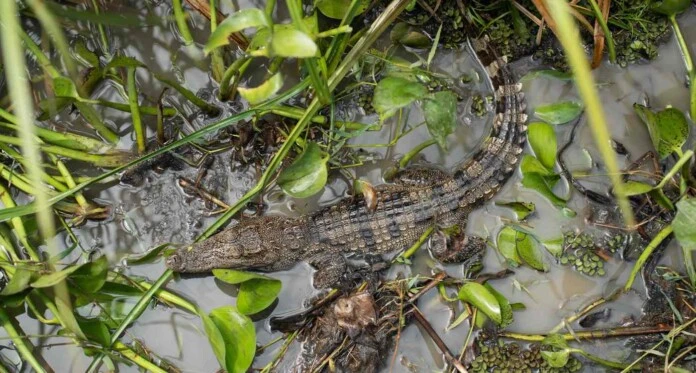Rare Crocodiles Make a Comeback in Laos Wetlands Thanks to Local Conservation Efforts
In a hopeful step for one of the world’s rarest reptiles, ten Siamese crocodiles were recently released into the Xe Champhone Wetland in southern Laos — part of an ambitious community-driven effort to revive the dwindling population of this Critically Endangered species.
Once widespread across Southeast Asia, fewer than 1,000 Siamese crocodiles (Crocodylus siamensis) are believed to remain in the wild today. Though not targeted by hunters, the species has suffered greatly from habitat loss, wetland drainage for agriculture, and accidental entanglement in fishing nets.
But in Savannakhet Province, home to the larger of two designated Ramsar sites (Wetlands of International Importance), hope is taking root — quite literally — in the marshy waters of the Xe Champhone Wetlands.
Unlike many of their more aggressive relatives, Siamese crocodiles are shy and pose no threat to humans. In fact, many local communities revere them, believing they bring good luck and spiritual protection.
Driven by this cultural respect, villagers have joined forces with the Wildlife Conservation Society (WCS) and local government officials in an effort to ensure the species’ survival.
The conservation strategy is both scientific and community-led: Volunteers locate crocodile nests, then safely relocate the eggs to village incubation stations where they hatch under carefully monitored conditions. The baby crocodiles are then raised for 32 months, until they grow to more than 3 feet in length, before being released back into the wild.
Currently, 163 juvenile crocodiles are being nurtured by the program — a promising number in a landscape where 6 to 8 nests are discovered each year. Based on nest counts and monitoring, the Xe Champhone Wetland is now believed to support an estimated 200 to 250 wild Siamese crocodiles.
Since the start of the initiative, a total of 183 crocodiles have been successfully reintroduced into their natural habitat.
To help build public awareness and further engage the community, a new Visitor and Information Center has opened at the wetlands. Featuring educational panels, life-sized wall murals, and interpretive trails, the center offers visitors an immersive look at the rich biodiversity of the wetlands — including endangered turtles, exotic fish, and waterfowl.
“I hope that the opening of the Xe Champhone Wetland and Crocodile Information Center, along with today’s release of the crocodiles, will bring lasting benefits to local communities as part of a long-term conservation effort,” said Mr. Khammone Thilavong, Deputy Director of the Provincial Forestry and Agriculture Ministry.
With the combined forces of science, tradition, and local stewardship, the Siamese crocodile is no longer just surviving — it’s staging a remarkable comeback in Laos’ treasured wetlands.
